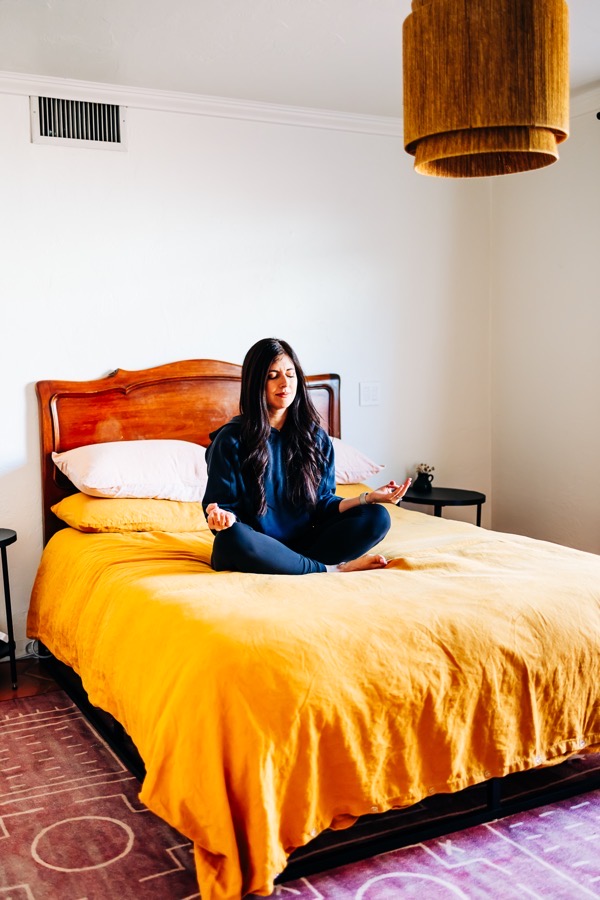Shainrg some ideas on how to use breathwork for stress reduction.
Hi friends! How are ya? I hope you’re enjoying the week so far. I have client calls all day today and am looking forward to choir later tonight 🙂 This is one of the busiest seasons of the year for so many of us. I feel like from now until the end of school is a sprint to the finish line. So, for today’s post, I wanted to chat a little bit about stress and one of my favorite stress reduction techniques.
Stress has become a common part of our daily lives. From work deadlines to family responsibilities, it’s easy to feel overwhelmed and anxious. However, one powerful tool that we often overlook is our breath.
Breath work, also known as controlled breathing or pranayama, is a simple yet effective technique that can help reduce stress and promote relaxation.
Today, I wanted to talk about the benefits of breath work and share some practical tips to incorporate it into your daily routine. Please let me know if you give them a whirl!

Breathwork for stress reduction
The Benefits of Breath Work:
Stress Reduction: One of the most significant benefits of breath work is its ability to reduce stress levels. Deep, slow breathing activates the body’s relaxation response, calming the nervous system and lowering cortisol levels.
Improved Mental Clarity: Breath work can help clear the mind and improve focus and concentration. By bringing awareness to the breath, you can quiet racing thoughts and achieve a sense of mental clarity.
Enhanced Emotional Well-being: Conscious breathing can help regulate emotions and promote a sense of calm and balance. It can be particularly beneficial for managing anxiety, depression, and other mood disorders.
Better Sleep Quality: Practicing breath work before bedtime can help calm the mind and promote better sleep quality. Deep breathing techniques can induce a state of relaxation, making it easier to fall asleep and stay asleep throughout the night.
Increased Energy Levels: Deep breathing delivers oxygen to the brain and muscles, increasing energy levels and improving overall vitality. By practicing breath work regularly, you can boost your energy levels and combat feelings of fatigue.
How to Practice Breath Work for Stress Reduction:
Diaphragmatic Breathing: Start by sitting or lying down in a comfortable position. Place one hand on your abdomen and the other on your chest. Inhale deeply through your nose, allowing your abdomen to rise as you fill your lungs with air. Exhale slowly through your mouth, allowing your abdomen to fall. Repeat for several breaths, focusing on the sensation of your breath moving in and out of your body.
Box Breathing: This technique involves breathing in for a count of four, holding for a count of four, exhaling for a count of four, and holding for a count of four. Visualize drawing a square with your breath, inhaling as you ascend, holding at the top, exhaling as you descend, and holding at the bottom.
Alternate Nostril Breathing: Sit in a comfortable position and close your right nostril with your right thumb. Inhale deeply through your left nostril for a count of four. Close your left nostril with your ring finger, and exhale through your right nostril for a count of four. Continue alternating nostrils for several rounds, focusing on the rhythm of your breath.
Mindful Breathing: Take a few moments throughout the day to pause and bring awareness to your breath. Notice the sensation of air entering and leav